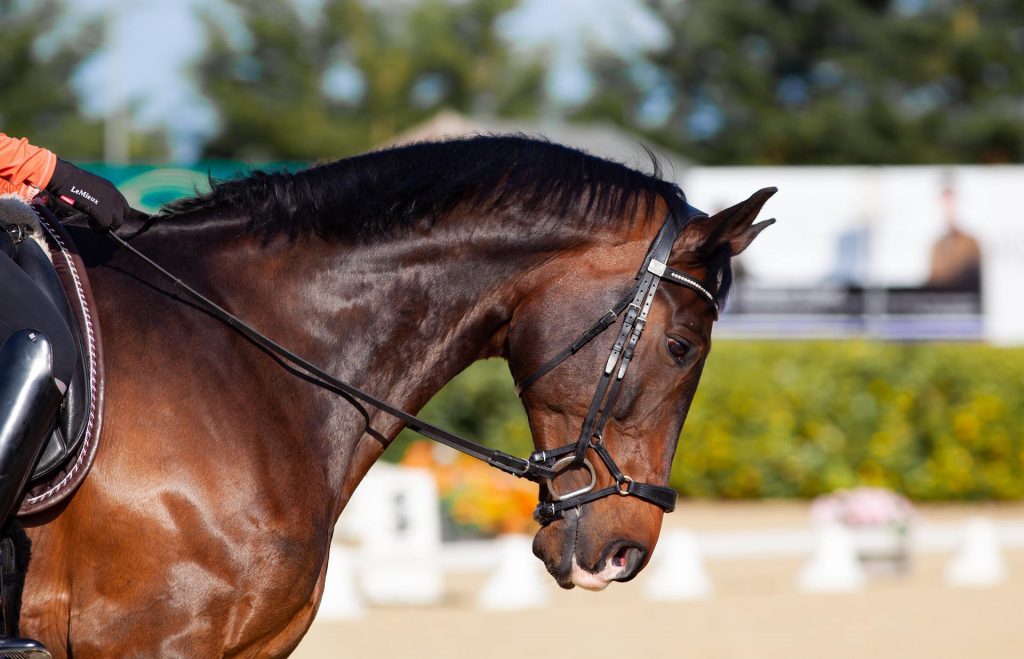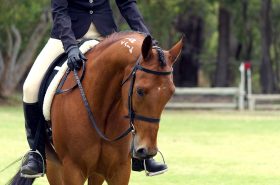The concept is simple, but actually riding one can be difficult.
A smooth transition can be beautiful to watch. The horse gracefully glides into the next gait with minimal effort. Furthermore, the rider’s aids are almost non-existent to the audience. It doesn’t matter what discipline you ride, transitions are almost always required. Some tests or maneuvers may request you move your horse upward into a faster gait or downward into a slower one.
Dressage riders love their transitions. They practice them in almost every schooling session. Why?… Because they encourage balance, collection, suppleness, and obedience to name a few things. Young horses learn them in the very beginning stages of training and experienced horses use them to advance their skills. Riders can use transitions as a training tool no matter what experience level the horse is. It is important that the rider knows how to properly ask for them though!

Riding Upward Transition
An upward transition requests that the horse moves forward. They will engage their hindquarters. Some of them include a halt to walk, walk to trot, and trot to canter. With these transitions, you’ll need your seat, legs, and reins.
- Apply your legs at the girth.
- Keep your seat supple and go with your horse’s movement.
- Soften your inside rein to allow for the forward energy.
- The contact on your outside rein should stay steady to prevent your horse from drifting outward.
Exception: The concept is the same for the trot to canter, though most riders apply inside leg at the girth and outside leg behind the girth. The pressure of the inside seat bone increases ever so slightly, as well.
The horse should stay rhythmic and steady throughout the transition. Don’t give them the opportunity to rush or get pacey.

Riding Downward Transitions
The horse’s hindquarters must also be engaged while performing downward transitions. In fact, riders use this exercise to encourage their horse to become lighter on the forehand and lower their haunches. Some of the downward transitions include canter to trot, trot to walk, and walk to halt. Much like upward movement, the rider needs to use their seat, legs, and reins.
- Stretch your legs down around the horse’s sides.
- Sit deep in the saddle and slow your seat.
- Your hands should close against the reins, but not pull back.
- As your horse slows, soften your hands to encourage forward energy.
Your horse should feel light and smooth. Make sure they don’t collapse into the downward transition or feel heavy on your hands.
Your horse’s level of training will dictate the difficulty of the transition. As they progress, they should become more balanced and smoother in their movement. Some riders will use the help of ground poles or cavaletti to encourage engagement of the hindquarters, which is so important in transitions. Ultimately, it’ll take time and practice to get the perfect one!
Love this blog post? We think you will like Using Your Seat In Riding



